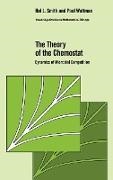Read more
Klappentext The chemostat is a basic piece of laboratory apparatus, yet it has begun to occupy an increasingly central role in ecological studies. The ecological environment created by a chemostat is one of the few completely controlled experimental systems for testing microbial growth and competition. As a tool in biotechnology, the chemostat plays an important role in bioprocessing. This book presents the theory of the chemostat as a model for larger ecological problems such as food chains, competition along a gradient, competition in the presence of an inhibitor, and the effects of time-varying inputs. Models that take account of size structure, variable yields, and diffusion are also considered. The basic phenomena are modeled and analyzed using the dynamical systems approach. New directions for research and open problems are discussed. Six appendices provide an elementary description of the necessary mathematical tools. Teachers, researchers, and students in applied mathematics, chemical engineering, and ecology will find this book a welcome resource. Zusammenfassung This book gives a theoretical treatment of the competition between different strains of micro-organisms consuming a single nutrient in a common laboratory device called a chemostat. Mathematical analysis using tools of dynamical systems leads to general and testable predictions of the behaviour of real ecological and biotechnology systems. Inhaltsverzeichnis 1. The simple chemostat; 2. The general chemostat; 3. Competition on three trophic levels; 4. The chemostat with an inhibitor; 5. The simple gradostat; 6. The general gradostat; 7. The chemostat with periodic washout rate; 8. Variable yield models; 9. A size-structured competition model; 10. New directions; 11. Open questions; Appendix A. Matrices and their eigenvalues; Appendix B. Differential inequalities; Appendix C. Monotone systems; Appendix D. Persistence; Appendix E. Some techniques in nonlinear analysis; Appendix F. A convergence theorem....

